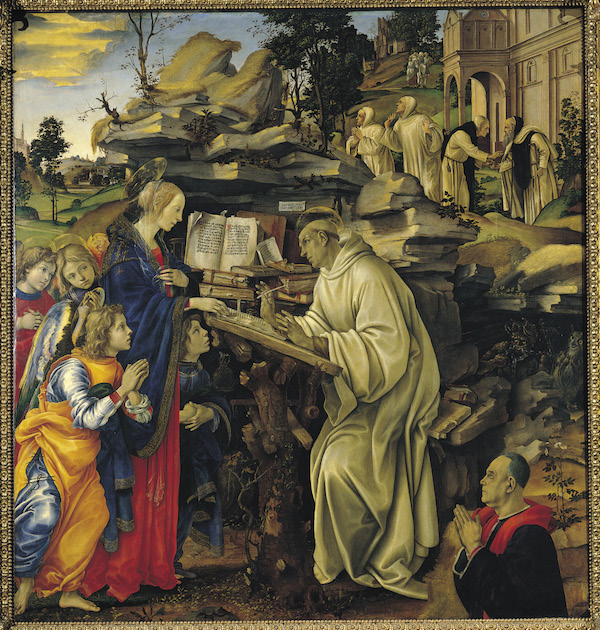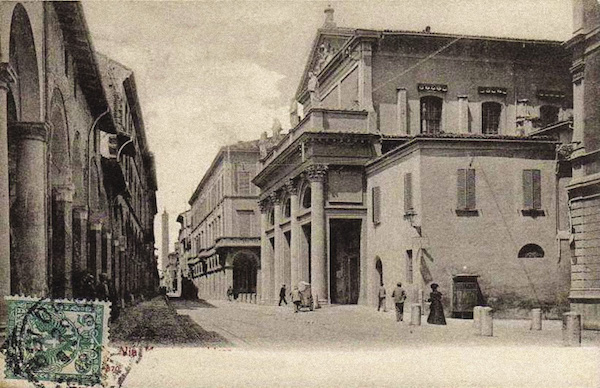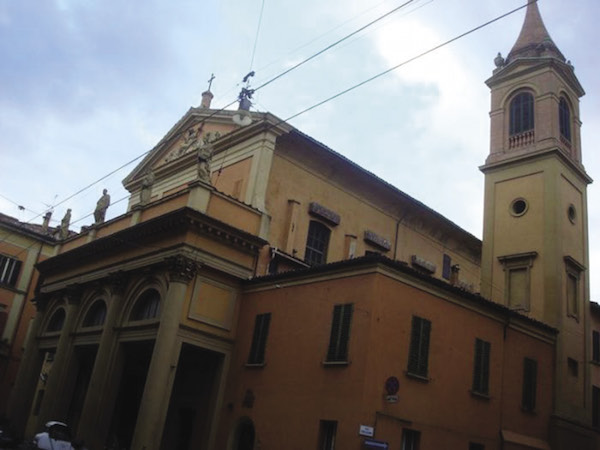Do you want to lose your mind? Begin reconstructing the history of the Templars and in particular of their presence (and their considerable property) in Bologna.
We must first go back to the birth of the Order established ‒ presumably ‒ between 1118 and 1120, and highlight some peculiarities: it was a militia with a special responsibility, that had a public function; they were knights who became monks, but not monks who became knights; they were linked to the Cistercian Order because of the rules given to them by St. Bernard of Clairvaux in 1135; they obtained autonomy from the bishops and the local clergy with a bull of Pope Innocent II in 1139; they chose as a symbol a Greek cross, representing the passion of Christ; they were based, from the beginning, by permission of the King of Jerusalem, Baldwin, in the stables adjacent to the royal palace, on the esplanade of the Temple of Solomon.
Soon, from the Holy Land, the Order has a widespread presence in Europe: in particular, in Italy, where they settled around 1130, building "preceptors and mansions" along the most frequented roads by medieval pilgrims and the armed crusades to the Holy Land, conspicuously enriching themselves with financial assets, commercial revenue, donations.

On October 13th, 1307, the King of France, Philip the Fair, long envious of the Templar power ‒ and therefore determined to destroy the Order and confiscate its huge assets ‒ accused of heresy the Order itself, which gave rise to a series of local trials, the most important of which was held in Paris from 1308 to 1311. The outcome: on April 13th, 1312, Pope Clement V requested the dissolution of the Templar Order and directed its assets to the Order of St. John of Jerusalem.
During the great trial held in Paris, Pietro da Bologna, monk and chaplain, law expert ‒ known for his culture and scholarly eloquence ‒ was one of the four advocates who in 1310 were appointed by 560 brothers to defend the Order. But Pietro da Bologna mysteriously disappeared from the prisons of Paris, in May 1310. However, in June 1311, in Bologna's provincial council of Templar appears the name of Pietro da Monte Acuto, in the Bolognese countryside, and in 1313, a preceptor of Templars for Bologna and Modena by that name is found. Could it be the same person? And maybe even the same person with the name of Peter Roda who was buried in 1329 in the church of St. Mary of the Temple, in Bologna, under a tombstone that reads "Here rests the intrepid legal defender of Christ, loved within the Order"?
Certainly, however, it is the location of the Bolognese Templar Mansion, at the time known as "one of the richest of the ecclesiastical province of Ravenna for the annexed possessions and for the number of Templar monks who lived there".


The mansion of St. Mary of the Temple, and next to it the church of St. Mary Magdalene, was located on Strada Maggiore between Via Torleone and Vicolo Malgrado, and was built outside the walls of the city in the external circle, along the Via Emilia, towards the East. The location of the building, and part of the original form, including the cloister and a hall dating back probably to the beginning of the fourteenth century called the "Knights' Hall", seem to have remained unchanged for a long time, though, over the centuries, restructuring operations and the last war's bombing have resulted in important destruction.
Today, it is very moving to visit the "Knights' Hall", which still has its fourteenth century ceiling with wooden beams and thick walls with arched windows. As well, one cannot remain indifferent when learning that the Templars, in Bologna and in the countryside, possessed a great amount of land (a rough estimate is about 400 tornature equal to more than 83 hectares) as well as 24 houses "cuppate" (with tiles), a palace, two churches and three agricultural tenements.
What was once the tower of the Mansion also deserves some attention? It was next to the church of St. Mary of the Temple, located in the old civic number 213 of the Strada Maggiore. Built of brick tiles, 24-meters high, the tower weighed 400 tons and stood alone almost off the road. In fact, it created a barrier to the elevation of the church itself. Monk Cherubino Ghirardacci wrote in Part III of his History of Bologna that the owner pro tempore monk of the Order of the Knights of Saint John of Jerusalem of Malta, Achille Malvezzi, decided to move it a few meters and asked Aristotle Fioravanti, engineering for the City of Bologna and excellent architect who, on August 8th 1455, had it placed on oak beams and slide on iron-rimmed oak cylinders, and moved by 18,24 meters placing it on the "cantone di Malgrà", that is, closer to the church. In March 1825, Luigi Aldini, who had become the owner, had the tower demolished, after he was given permission, and today the tower of the mansion is remembered by a small commemorative plaque placed by the City of Bologna, in the place where it first was, at the corner of Strada Maggiore and Vicolo Malgrado.

The extensive historical and scientific studies carried out by Professor Giampiero Bagni revealed, also with the use of a georadar, that underneath the actual surface of the road, it is possible to detect even today the foundations of the Tower of St. Mary of the Temple.




.png)